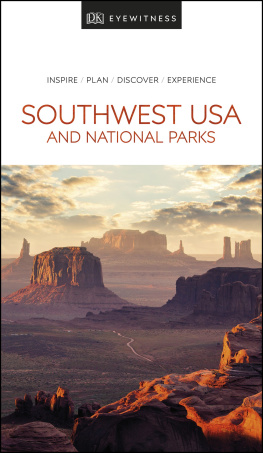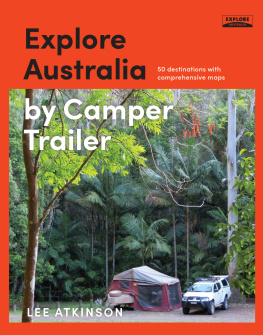CONTENTS
FEATURE PARKS
OTHER PARKS
VICTORIA

Many of Victoria's most spectacular natural features, wilderness areas and native plant and animal habitats are protected within its network of national parks, ranging from the alpine high country of the north-east to sundrenched, semiarid desert in the west.
These parks shelter rare plant and animal species, such as the tiny mountain pygmy-possum, the world's only alpine marsupial. In many cases the parks have significant Indigenous heritage; for example, the rich Aboriginal rock-art sites of the Grampians National Park. The parks provide exceptional opportunities for bushwalking, camping, swimming, fishing, birdwatching and four-wheel driving, all in wonderful natural environments. There are lighthouses and shipwrecks, gold diggings and mining relics, and historic homesteads.
The beauty, the richness and the variety of the parks make them an essential part of our heritage and an invaluable gift to pass on to future generations.
 | Parks Victoria (PV) 13 1963
www.parkweb.vic.gov.au |

In winter the high plateaus of Alpine National Park are snow-covered; in summer they are meadows carpeted with wildflowers
PARK INFORMATION
PV 13 1963 | PV Mansfield (03) 5733 1200
SIZE
646 000 ha
LOCATION
220500 km north-east of Melbourne; 47 km east of Mansfield; 5560 km south-east of Bright; 150170 km north of Sale; 170 km north of Bairnsdale; 133 km north of Orbost; 70 km south of Jindabyne (NSW)
ACCESS
From Mansfield via C320 to Mt Buller; from Bright via Great Alpine Rd to Hotham Heights then Dinner Plain, or via Mt Beauty then C531 to Falls Creek; from Bairnsdale or Sale via Princes Hwy then Dargo Rd to Dargo High Plains; from Sale via Princes Hwy then JamiesonHeyfield Rd to Licola then Wellington River; from Bairnsdale via Great Alpine Rd to Omeo, Dinner Plain and Hotham Heights; from Orbost via Buchan to Suggan Buggan; from Jindabyne to Suggan Buggan
BEST SEASON
Winter for snow sports; spring and summer for bushwalking, wildflowers, scenic driving
VISITOR INFORMATION
Bright 1800 500 117 | Falls Creek 1800 033 079 | Mt Beauty 1800 808 277 | Mt Hotham 1800 354 555 | Omeo (03) 5159 1552 | www.greatalpinevalleys.com.au
MUST SEE, MUST DO
VISIT Wallaces Hut (1899), the oldest cattlemen's hut on the high plains
SKI, SNOWBOARD OR TOBOGGAN down the snowy slopes at Falls Creek in winter
GO BUSHWALKING in summer amid colourful alpine wildflowers
JOIN A TRAIL RIDE or take a bike ride, or try whitewater rafting on the upper reaches of the Murray River
DRIVE the Great Alpine Road for breathtaking views
The extensive Alpine National Park embraces a majestic landscape of soaring mountain peaks, alpine meadows, undulating grassy plains, deep gorges and pure icy rivers. In winter, its snowfields welcome skiers and snowboarders, while in summer visitors come to experience its breathtaking views, hike or ride to its furthest reaches, raft on its rushing waterways, explore its rich heritage or simply breathe the invigorating air and enjoy the immense natural beauty.
Created in 1989 as a result of amalgamating a number of parks in the state's north-east, this is Victoria's largest national park and includes ten of its highest peaks. It is one of eight parks along the Great Dividing Range that comprise the Australian Alps National Parks, a cooperative arrangement between the states and Commonwealth to preserve and manage these valuable alpine and subalpine environments.
The park is significant on many counts, not least its untouched wilderness areas and its high mountain water catchments, but it is also a park that invites exploration and adventure, as well as moments of quiet contemplation.
Climate-wise, the park is a land of extremes: conditions can change suddenly from clear and sunny to windy and cold, with snow and subzero temperatures possible even in summer. Many areas are remote, virgin bush and potentially treacherous.Visitors, particularly walkers and campers, need to be well prepared at all times. Bushfires are a constant danger in summer. At the time of writing recent flooding had caused many areas (particularly in the remote southern and eastern regions) to become inaccessible; contact Parks Victoria for the latest information.
Aboriginal culture
The Kurnai people from the south-east knew this landscape well, travelling to the high country for ceremonial occasions and to feast on the bogong moths that migrate in vast numbers to the mountain peaks in summer.
A look at the past
Explorers Hume and Hovell trudged this way on their 1824 expedition, and were followed not long after by pastoralists. The high plains have a long history of cattle grazing, but they have also seen goldminers, loggers, and workers on hydroelectric schemes. After World War II, a network of roads originally built to serve the timber industry helped open up this vast alpine area to visitors.
Natural features
The Victorian Alps, protected by this park, are at the southern end of the Great Dividing Range, a landscape of high plateaus or plains with jagged basalt outcrops, deep carved river valleys and Victoria's highest mountain peaks. The headwaters of many of the state's major rivers are here the Jamieson, Howqua, King, Ovens, Mitchell and Macalister as well as tributaries of the Snowy and Upper Murray.
Native plants
Dozens of eucalypt species forest the high country, the most distinctive being the twisted colourful forms of the hardy snow gum, which survives in sheltered pockets even above 1500 metres. Above the tree line, too cold for trees, are herbfields, grasslands and alpine moss beds. As the snow thaws, wildflowers emerge native buttercups, snow daisies and billy buttons by mid-summer carpeting the alpine meadows in a flourish of colour. In all, there are more than 1110 plant species, with 200 of these rare and under threat.
Wildlife
The park's wildlife is diverse and plentiful, with around 300 native species, including animals specially adapted to the alpine conditions.The rare mountain pygmy-possum, the only alpine marsupial in the world, scurries among the low snow gums and boulder-covered heathlands, storing seeds and fruit to last the winter months. It also feeds on the bogong moths.
Another creature to survive the icy winters is the corroboree frog, vividly striped yellow and black and less than 3 centimetres long, which lives in sphagnum moss in alpine bogs.Threatened species include the rare smoky mouse, and the broad-toothed rat, which is found in alpine areas only. Most visible are the birds, with raptors, in particular the wedge-tailed eagle, soaring on thermals, as well as gang-gang cockatoos, crimson rosellas and wattlebirds.
Camping and accommodation
There are campsites with some facilities dotted throughout Alpine National Park, especially in the Mansfield and Heyfield regions.There are other sites without facilities, and campers must be totally self-sufficient. Bush camping is permitted in some areas only.
















